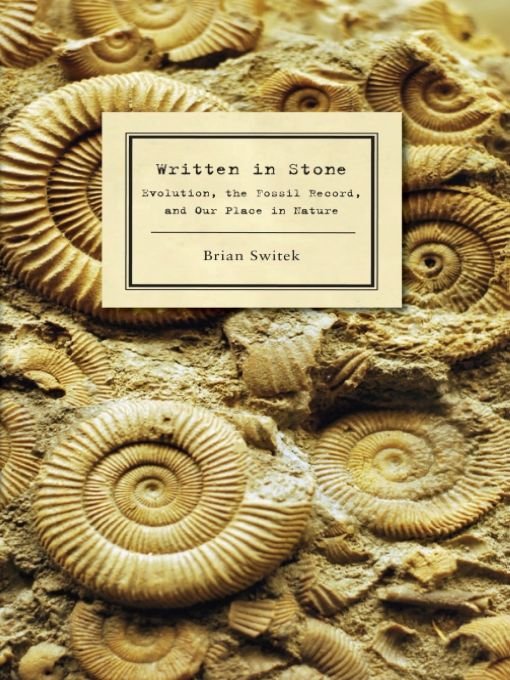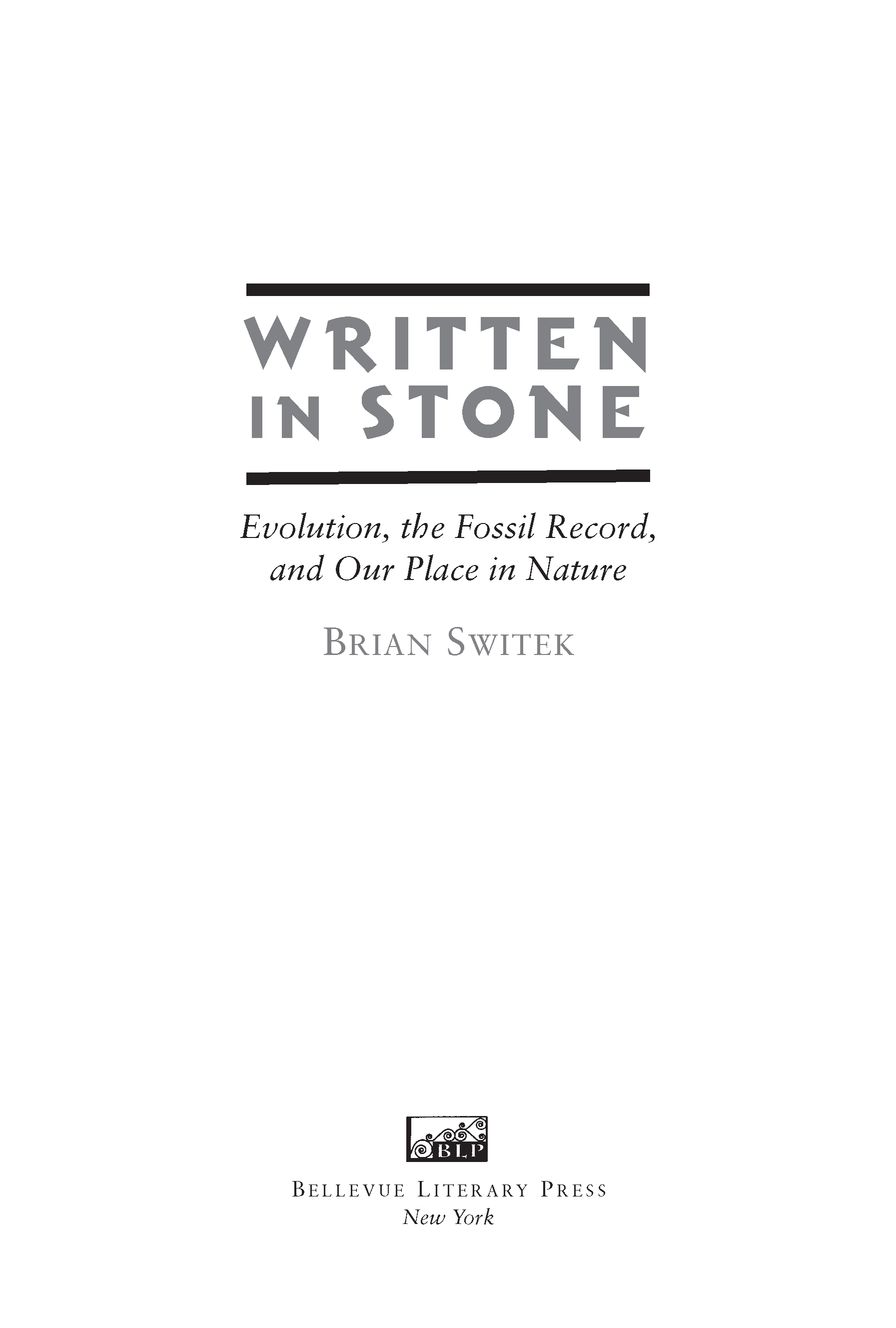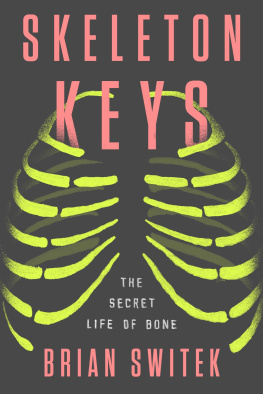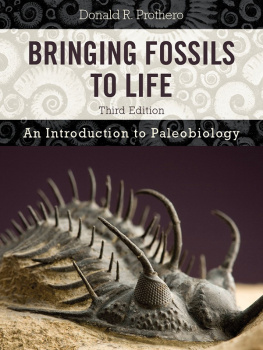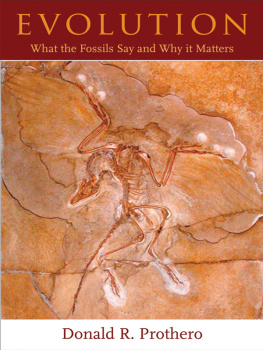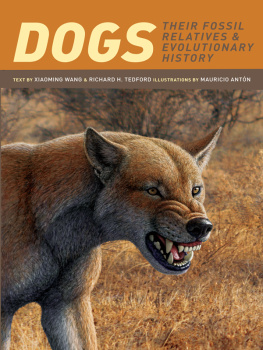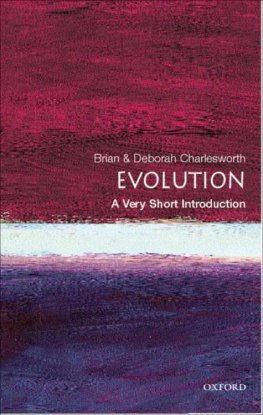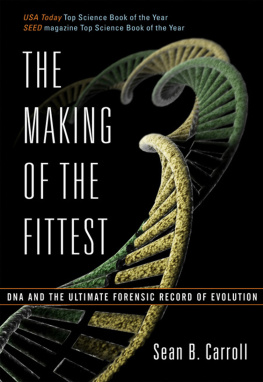Table of Contents
For Tracey
FIGURE 1 - The skeleton of the forty-seven-million-year-old fossil primate Darwinius masillae.
Introduction: Missing Links
About thirty years ago there was much talk that geologists ought only to observe and not theorise; and I well remember some one saying that at this rate a man might as well go into a gravel-pit and count the pebbles and describe the colours. How odd it is that anyone should not see that all observation must be for or against some view if it is to be of any service!
CHARLES DARWIN in a letter to Henry Fawcett, 1861
Let us not be too sure that in putting together the bones of extinct species... we are not out of collected fossil remains creating to ourselves a monster.
SAMUEL BEST, After Thoughts on Reading Dr. Bucklands Bridgewater Treatise, 1837
Embedded in a slab of forty-seven-million-year-old rock chipped from a defunct shale quarry in Messel, Germany, the chocolate-colored skeleton lay curled up on its side as if its owner had peacefully passed away in its sleep. Even the outline of the creatures body could be seen, set off in dark splashes against the soft tan of the surrounding stone, but the hands were what immediately drew my attention. Stretched out in front of the body, as if the skeleton was clutching at its slate tomb, each hand bore four fingers and an opposable thumb, all of which were tipped in compressed nubs of bone that would have supported flat nails in life. These were the hands of a primate, one of my close extinct relatives, but was it one of my ancestors?
I had been waiting for days to get a good look at the fossil. My curiosity was initially piqued on May 10, 2009, when the British newspaper the Daily Mail announced that the venerable natural history documentary host David Attenborough was preparing to unveil the Missing Link in human evolution. The full details would be presented in a forthcoming BBC program, the article promised, but as a teaser the piece included a caricature of where our new ancestor fit into our family history. Its lemur-like silhouette stooped at the beginning of a short parade of human evolution conducted through our primate antecedents to us.
Further details about the fossil were difficult to dig up. A May 15, 2009, piece by the Wall Street Journal provided little new information other than that the discovery would be unveiled the following Tuesday during a New York City press conference coordinated with the release of a descriptive paper in the journal PLoS One. This made sense of a nauseatingly overhyped press release I had received the day before which shouted WORLD RENOWNED SCIENTISTS REVEAL A REVOLUTIONARY SCIENTIFIC FIND THAT WILL CHANGE EVERYTHING. The fossil would be presented with all the pomp and circumstance due a newly discovered and long-lost family member, but I did not care as much about the public ceremonies as the scientific paper. I wanted to know if the evidence supported the fantastic claims being bandied about in the newspapers.
I had hoped that PLoS One would send out an embargoed version of the paper so that science writers like me could brace for what was promised to be an earthshaking announcement. This is a standard practice in which a journal distributes papers to science writers a few days early so that stories can be prepared (with the understanding that no one will break the story until the embargo lifts), and PLoS One had used it for many of its major publications. No such luck. Science writers would have to wait for the grand unveiling like everyone else.
When the paper was finally released I felt simultaneously overjoyed and underwhelmed. The petrified skeletonnamed Darwinius masillae by the authors of the study in honor of Charles Darwinwas the most beautifully preserved primate fossil ever discovered. The remains of prehistoric primates are rare to begin with; most of the time paleontologists find only teeth and bone fragments. But Darwinius was exquisitely preserved with hair impressions and gut contents in place. Even the famous skeleton of our early relative Lucy was far less complete. By any estimation, this first specimen of Darwinius was a gorgeous fossil.
Despite the intricate nature of the fossils preservation, however, the evidence that Darwinius was even close to our ancestry was flimsy. The paper confirmed that it was a type of extinct primate called an adapiform, and while they were once thought to be good candidates for early human ancestors more recent research showed that lemurs, lorises, and bush babies are their closest living relatives. In order to change this consensus Darwinius would have to exhibit some hitherto unknown characteristic that affiliated it more closely with early anthropoid primates (monkeys and apes, including us), but the authors did not make a good case for such a connection. There was no trait-for-trait comparison of Darwinius with other living and fossil primates that would have supported the status of ancestor that early reports had given it.
None of this hindered the fossils bombastic media debut. In public the fossil was called Ida after the daughter of one of the papers authors, paleontologist Jrn Hurum, and Hurum introduced Ida as our unquestionable ancestor. He proclaimed that Darwinius was the first link to all humans... the closest thing we can get to a direct ancestor. Some of his co-authors were equally given to hyperbole. Paleontologist Philip Gingerich compared Darwinius to the Rosetta Stone, and lead author Jens Franzen stated that the effect of their research would be like an asteroid hitting the Earth. A pair of high-profile documentaries, a top-notch Web site, a widely read book, and dozens of early media reports drove home the same message; Ida was the Missing Link that chained us to our evolutionary history.
New York Times journalist Tim Arango beautifully described this tidal wave of publicity as science for the Mediacene age. In an instant Ida was everywhere. After seeing the fossil plastered all over the news and even in a customized Google logo I half expected to find promotional The Link breakfast cereal at the supermarket. The premiere was just as well orchestrated as that of any Hollywood blockbuster, but unlike most big-budget films there was no buzz leading up to the big event. Outside of the early reports from the Daily Mail and Wall Street Journal barely a peep was heard about Ida before her debut.
Scientists and journalists who were not content with regurgitating the approved press releases scrambled to dig up the glorified lemurs backstory. Something was not right. The public was being sold extraordinary claims about Ida before anyone had a chance to see if the science held up to scrutiny. It was the scientific equivalent of not screening a film for review by critics but promoting the movie as the greatest since Casablanca. Hurum was unapologetic about this media strategy. Any pop band is doing the same thing, he dodged. Any athlete is doing the same thing. We have to start thinking the same way in science. But, as Hurum well knew, there was much more to it than that. As reports started to trickle in from independent sources it quickly became apparent that Ida had been groomed for stardom almost from the very start.

